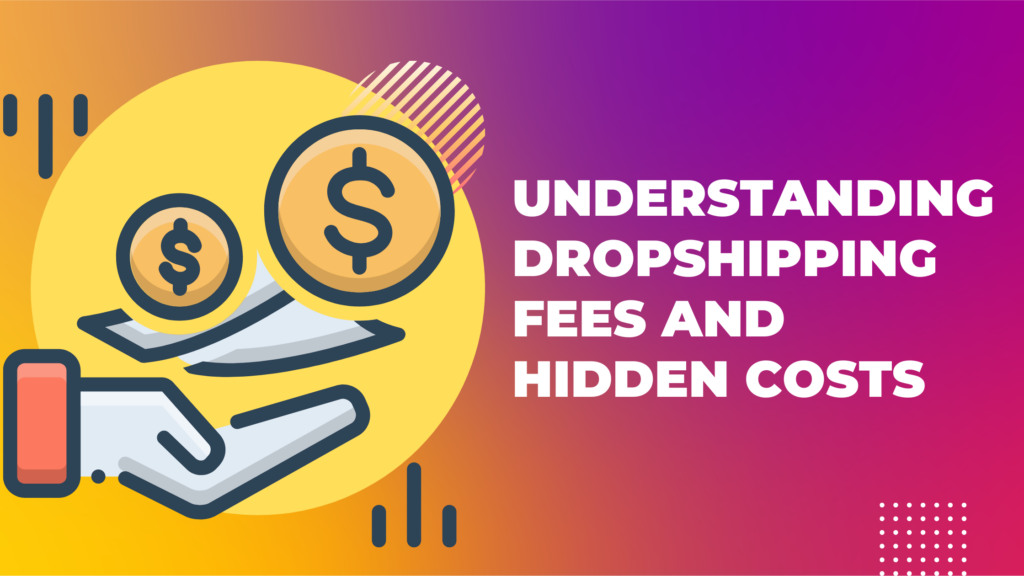Understanding Dropshipping Fees and Hidden Costs
Dropshipping has emerged as a popular business model for entrepreneurs looking to establish an online store without the burden of inventory management. With its low startup costs and minimal overheads, dropshipping offers an enticing opportunity for aspiring online retailers. However, it is crucial to understand the various costs associated with dropshipping to ensure profitability and success.
Calculating Dropshipping Costs
To accurately assess the costs associated with dropshipping, it is crucial to consider all the factors involved. By calculating your total expenses, you can determine the minimum price you need to charge for your products to maintain profitability. Let’s explore the key components that contribute to dropshipping costs:
Platform Fees
Most dropshippers rely on ecommerce platforms to set up and operate their online stores. These platforms often charge monthly subscription fees or transaction fees based on your sales volume. It is important to research and compare different platforms to find the one that offers the best value for your business. Consider factors such as pricing, features, ease of use, and integrations with other tools and services.
Payment Processing Fees
When customers make purchases on your online store, you will incur payment processing fees. These fees are typically a percentage of the transaction value or a fixed amount per transaction. It is essential to factor in these fees when calculating your overall costs. Research various payment processors and choose the one that offers competitive rates and reliable service.
Shipping Costs
Shipping costs can significantly impact your dropshipping expenses. As a dropshipper, you rely on your suppliers to handle the shipping process. It is important to understand your suppliers’ shipping fees and policies to accurately calculate your costs. Some suppliers may offer discounted shipping rates, while others may charge higher fees. Additionally, consider the impact of international shipping costs if you are sourcing products from overseas suppliers.
Product Costs
The cost of the products themselves is another critical component of dropshipping expenses. It is important to negotiate competitive prices with your suppliers to ensure that you can offer attractive prices to your customers while still maintaining healthy profit margins. Research different suppliers and compare their pricing to find the best options for your business.
Returns and Refunds
Returns and refunds are inevitable in any retail business, including dropshipping. It is essential to factor in the cost of returns, including shipping fees to return the product to your supplier, any restocking fees imposed by your supplier, and the potential loss of profit from the returned item. By considering these costs, you can ensure that you are prepared to handle returns while maintaining profitability.
Marketing and Advertising Expenses
To attract customers to your dropshipping store, you need to invest in marketing and advertising. These expenses can vary depending on your chosen strategies, such as social media advertising, influencer partnerships, or search engine optimization. It is important to allocate a budget for marketing and advertising and track the effectiveness of each channel to optimize your spending.
Hidden Costs of Dropshipping: Unveiling the Truth
While the aforementioned costs are relatively straightforward, there are several hidden costs in dropshipping that many entrepreneurs fail to consider. These hidden expenses can significantly impact your bottom line if not properly accounted for. Let’s explore some of the hidden costs of dropshipping:
Returns and Exchanges
Returns and exchanges can be a significant drain on your profit margins. As a dropshipper, you are responsible for handling customer returns and exchanges, even though the products are shipped directly from your suppliers. This means that you will incur the cost of return shipping, potential restocking fees, and the loss of profit from returned items. It is crucial to factor in these costs when calculating your overall expenses.
Customer Service
Providing excellent customer service is essential for any business, including dropshipping. However, managing customer inquiries and resolving issues can be time-consuming and costly. It is important to allocate resources for customer service and consider automating certain aspects, such as using chatbots or self-service portals, to streamline the process and reduce costs.
Inventory Management
While dropshipping eliminates the need to hold inventory yourself, it doesn’t absolve you from the challenges of inventory management. As a dropshipper, you rely on your suppliers to keep their inventory up-to-date and accurate. If your suppliers fail to do so, you may end up selling products that are out of stock or discontinued. This can lead to dissatisfied customers, negative reviews, and lost sales. It is crucial to choose reliable suppliers and establish clear communication channels to mitigate inventory management issues.
Shipping Delays
As a dropshipper, you rely on your suppliers to handle the shipping process. However, shipping delays can occur due to various reasons, such as supplier issues or external factors like natural disasters or customs delays. These delays can lead to unhappy customers, negative reviews, and potential loss of sales. It is important to communicate effectively with your suppliers and address any shipping delays promptly to minimize their impact on your business.
Setting Competitive Prices: Balancing Costs and Profitability
Setting competitive prices for your dropshipping products is crucial for attracting customers while maintaining healthy profit margins. When determining your product prices, it is important to consider all the costs involved, including marketing expenses, website maintenance, and supplier fees. Conduct thorough market research to understand the prices of similar products in your niche and set your prices accordingly. To offer competitive prices, consider offering discounts, bundles, or value-added services that differentiate your products from competitors. Additionally, calculate shipping fees and return costs to avoid any surprises that could negatively impact your profitability.
The Impact of Shipping and Handling Fees on Profit Margins
Shipping and handling fees have a direct impact on your profit margins, as they increase the overall cost of the product. Offering free or reduced shipping can make your products more attractive to customers while still maintaining your profit margins. Consider negotiating competitive shipping rates with your suppliers or partnering with fulfillment centers that offer discounted shipping options. Implementing strategies such as setting a minimum order value for free shipping or using lightweight packaging materials can help minimize shipping costs and improve your profit margins.
Tracking Expenses: Key to Maintaining Profitability
Tracking your expenses is crucial for maintaining profitability in dropshipping. By monitoring and analyzing your expenses, you can identify areas where you can reduce costs and optimize your operations. Utilize accounting software to keep track of all your expenses, including transaction fees, marketing expenses, and shipping costs. Regularly review your financial reports to have a clear understanding of your business’s financial health and make informed decisions based on accurate data.
Conclusion
Understanding the costs of dropshipping is essential for running a successful and profitable business. By comprehending the various fees associated with dropshipping and implementing effective strategies to minimize expenses, you can maintain healthy profit margins while offering competitive prices to your customers. Remember to negotiate with suppliers, streamline your shipping strategy, optimize marketing expenses, and automate your business processes to reduce costs and improve efficiency. By tracking your expenses and making informed decisions, you can navigate the world of dropshipping with confidence and achieve long-term success.





